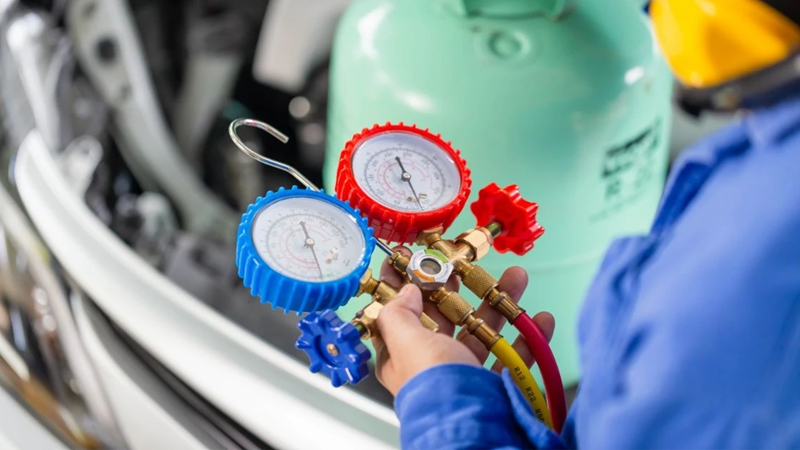
Ibrahim Ismail Elnafat
The Threat of Hydrofluorocarbons (HFCS) and Their Harmful Effects on Our Climate.
Most Read Stories Today
-
Water Scarcity and Artificial Rainfall: The Positive and The Negative Effects of Cloud Seeding, including Health Hazards and Climate Implications.
-
Renewable Energy in Rural Areas: Challenges, Opportunities, and Successful Rural Projects
-
Pakistan's Agriculture at Risk Due to Climate Variability
-
South Africa's Recent Floods: Is Climate Change to Blame?
-
South Korea's floods: root causes and prevention strategies.
-
South Africa: Cape Town, A City Under Fire
-
The Human Cost of Climate Disasters
-
Our Oceans, Our Future: The South African Dilemma of Overfishing
-
Degenerative Impact of Hydrocarbons On The Environment.
-
Sustainable Urban Planning - Copenhagen and the Path to Climate Resilience
Hydrofluorocarbons (HFCs) are a group of industrial chemicals composed of Hydrogen, Fluorine, and Carbon atoms that are produced for commercial purpose.
These powerful synthetic greenhouse gases are mainly used in cooling systems and refrigeration equipments. It is also used as a substitute for ozone-depleting substances that are typically emitted in smaller quantities. HFCs are the least popular greenhouse gases and the least talked about, on their impact on climate change.
Hydrofluorocarbons are effective absorbers of infrared radiation, a small amount of these gases is enough to have a huge impact on global warming. Despite releasing not more than 1 percent of total greenhouse gases into the atmosphere, their impact on global warming is hundreds to thousands times more potent than CO2 per unit of mass. Due to their high potency, they are sometimes referred to as High Global Warming Potential gases.
Hydrofluorocarbons are short-lived air pollutants that last only 15 to 29 years in the atmosphere. They are one of the fluorinated gases under the restrictions of Kyoto Protocol and the Montreal Protocol. These are intergovernmental pacts that call for swift actions to cut global warming by 0.5 degrees by the end of this century.
In 2016, about 200 countries pledged to phase out powerful greenhouse gases such as HFCs and to reduce them by more than 80 percent globally by 2047. The deal is to meet the Paris Agreement Goal of limiting rising temperatures below 2 °C and avoiding more than 80 billion tons of carbon dioxide emissions over the next 30 years.
The Climatic/Environmental Impacts of Hydrofluorocarbons on Global Warming.
- HFCs contribute hundreds to thousands times to global warming per unit of mass than carbon dioxide.
- Over 20 years, HFCs were 3,790 times more harmful to global warming than carbon dioxide.
- HFCs emissions increases at a rate of 10-15 percent annually.
- HFCs can remain in the atmosphere for up to 29 years
- In 2050, the stock of air conditioning systems may increase to 5.6 billion. This means that 10 new units will be sold every second for the next 30 years.
- If left unchecked, global HFC emissions could rise to 19 percent of total carbon emissions by 2050.
To reduce HFCs emissions and impacts;
(1). HFCs can be effectively phased out by cutting their production and reducing their consumption through indirect energy efficiency; improve the life cycle, quality, and maintenance of equipments that uses their chemicals.
(2). If policies under the Kigali Amendment are successfully implemented and enforced, more than 50 percent of HFC emissions can be avoided.
(3). Adapting to available climate-friendly and ultra-low global warming potential alternatives such as hydrocarbons (R-600a and R-290) and ammonia (R-717). Solar cooling and magnetic refrigerators are also likely to be commercialized and available within the next few years.
Conclusion
In general, any gas that traps heat in the atmosphere is also called a greenhouse gas, but their heat trapping efficiency and atmospheric lifetimes greatly varied. Although carbon dioxide is the main player, most of them are potentially stronger. For example, Methane (CH4) is 21 times more potent than CO2, Nitrous Oxide (N2O) is 310 times more and HFCs are hundreds to thousands times more potential than carbon dioxide.
Unlike other greenhouse gases, HFCs are synthetic molecules that are commercially produced by humans and used in refrigeration equipments and heat pumps. They can also be found in solvents, foams, aerosols, and fire extinguishers. After their introduction to replace previous generation of synthetic gases, such as chlorofluorocarbons (CFCs) and hydrochlorofluorocarbons (HCFCs), the use and emissions of HFCs have rapidly increased over the years, making them among the fastest growing source of greenhouse gas emissions in the world.
References:
(1). https://www.sciencedirect.com/topics/earth-and-planetary-sciences/hydrofluorocarbon
(2). https://www.ccacoalition.org/fr/slcps/hydrofluorocarbons-hfcs
(3). https://cfpub.epa.gov/watertrain/moduleFrame.cfm?parent_object_id=2424
(4). https://en.m.wikipedia.org/wiki/Kyoto_Protocol
(5). https://en.m.wikipedia.org/wiki/Montreal_Protocol
(6). https://en.m.wikipedia.org/wiki/Treaty
(8). https://us.eia.org/campaigns/climate/what-are-hydrofluorocarbons/

Terms & Conditions
Subscribe
Report
My comments